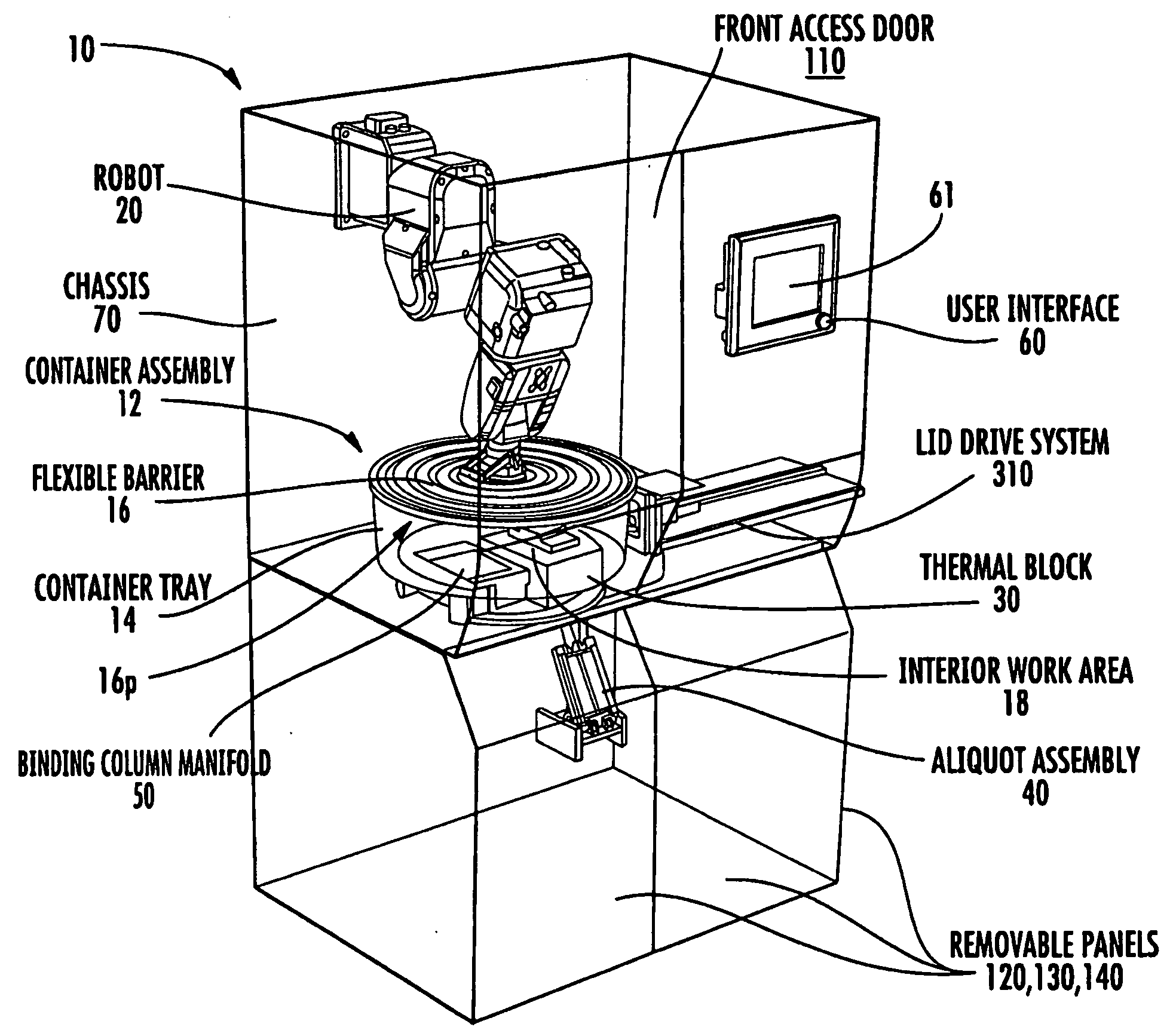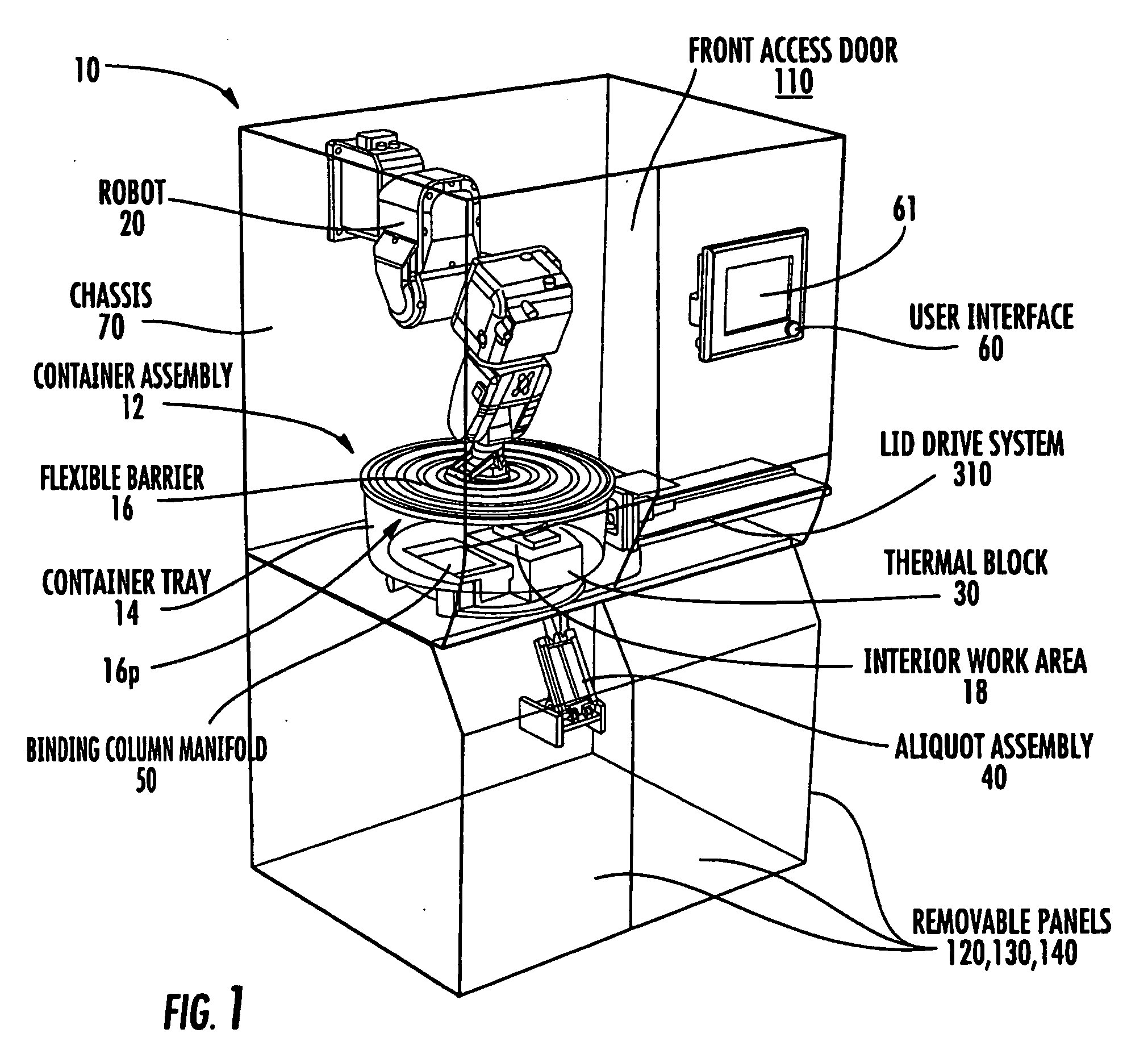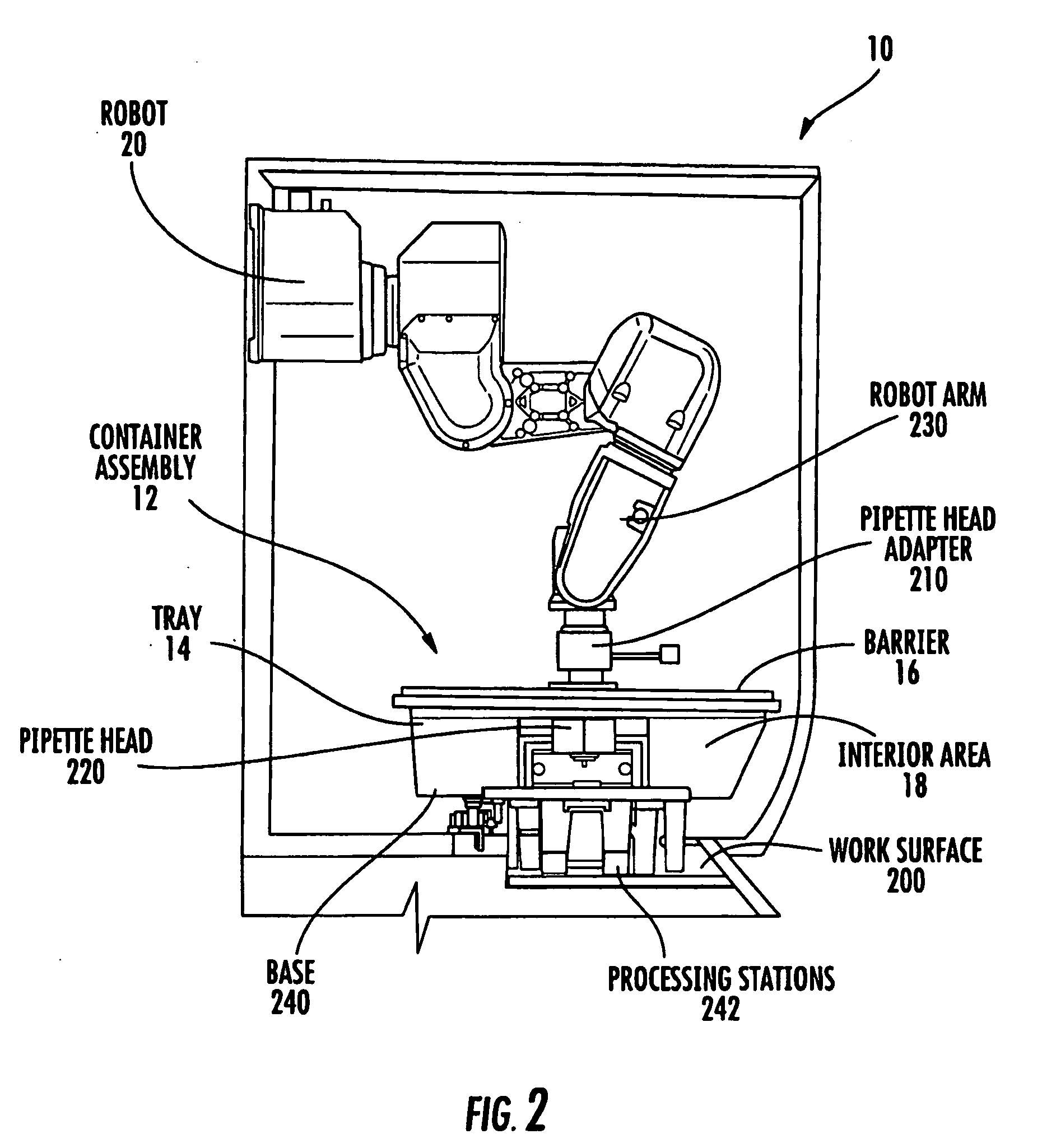Systems and methods for processing samples in a closed container, and related devices
a closed container and sample technology, applied in the field of automatic processing of samples and materials, can solve the problems of minute amounts of unwanted exogenous nucleic acid sequence contamination, and the risk of contamination is extremely large, so as to reduce the risk of contaminating subject material, prevent possible contamination of the processing system, and reduce cleaning requirements
- Summary
- Abstract
- Description
- Claims
- Application Information
AI Technical Summary
Benefits of technology
Problems solved by technology
Method used
Image
Examples
Embodiment Construction
[0008]Embodiments of the present invention are directed to systems, apparatus and methods for automated processing of one or more samples. The systems can be used to manipulate items in a closed environment, and may be particularly useful in the fields of medicine, diagnostics, biotechnology, electronics and nanotechnology. Embodiments of the invention may be particularly relevant for processing biological samples, including, but not limited to, tissues, blood, blood products, nucleic acids (e.g., RNA, DNA), proteins, cell cultures, and the like.
[0009]Embodiments of the present invention provide an apparatus for manipulating one or more items in a closed container. The container, also referred to herein as an “isolation container”, comprises a tray defining an interior chamber, which is configured to hold any number of items to be manipulated, and a flexible barrier configured and dimensioned to cover the interior area and seal with the container tray. A tool for manipulating items ...
PUM
 Login to View More
Login to View More Abstract
Description
Claims
Application Information
 Login to View More
Login to View More - R&D
- Intellectual Property
- Life Sciences
- Materials
- Tech Scout
- Unparalleled Data Quality
- Higher Quality Content
- 60% Fewer Hallucinations
Browse by: Latest US Patents, China's latest patents, Technical Efficacy Thesaurus, Application Domain, Technology Topic, Popular Technical Reports.
© 2025 PatSnap. All rights reserved.Legal|Privacy policy|Modern Slavery Act Transparency Statement|Sitemap|About US| Contact US: help@patsnap.com



